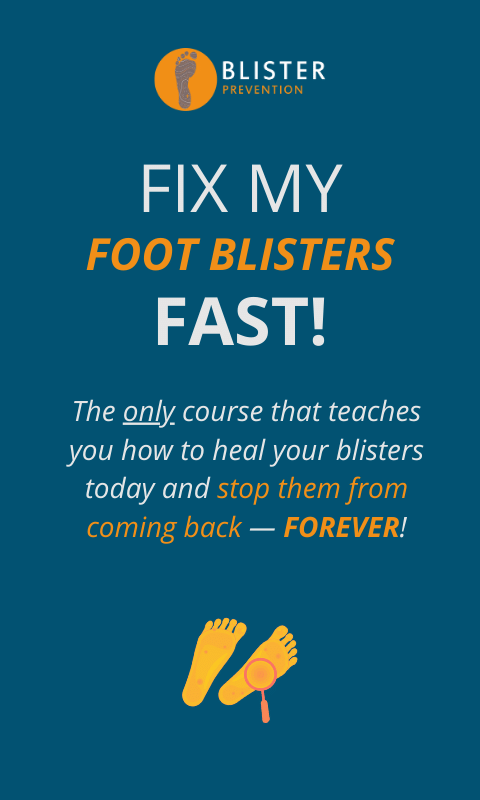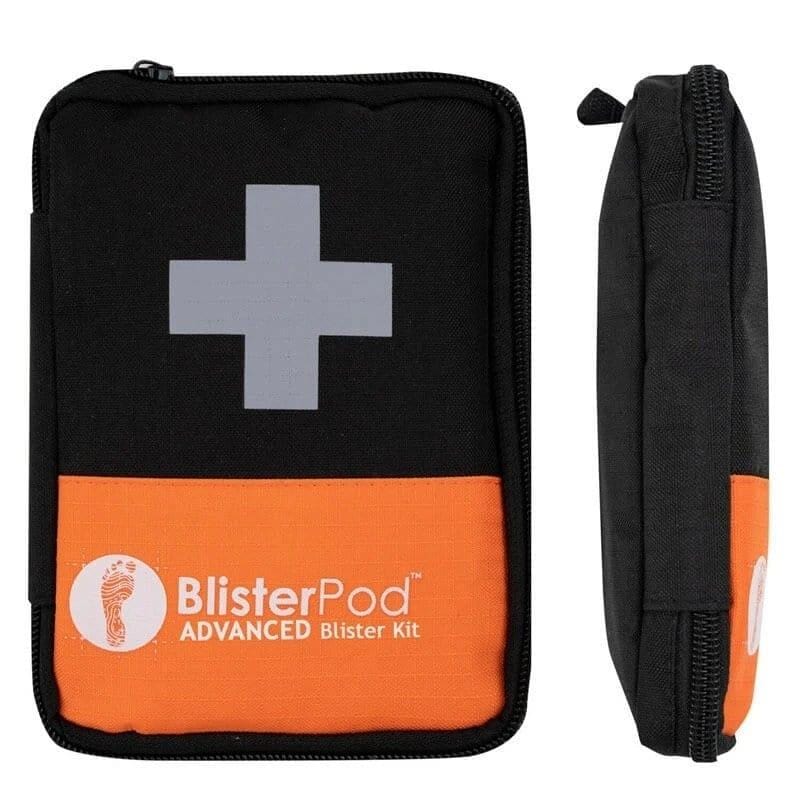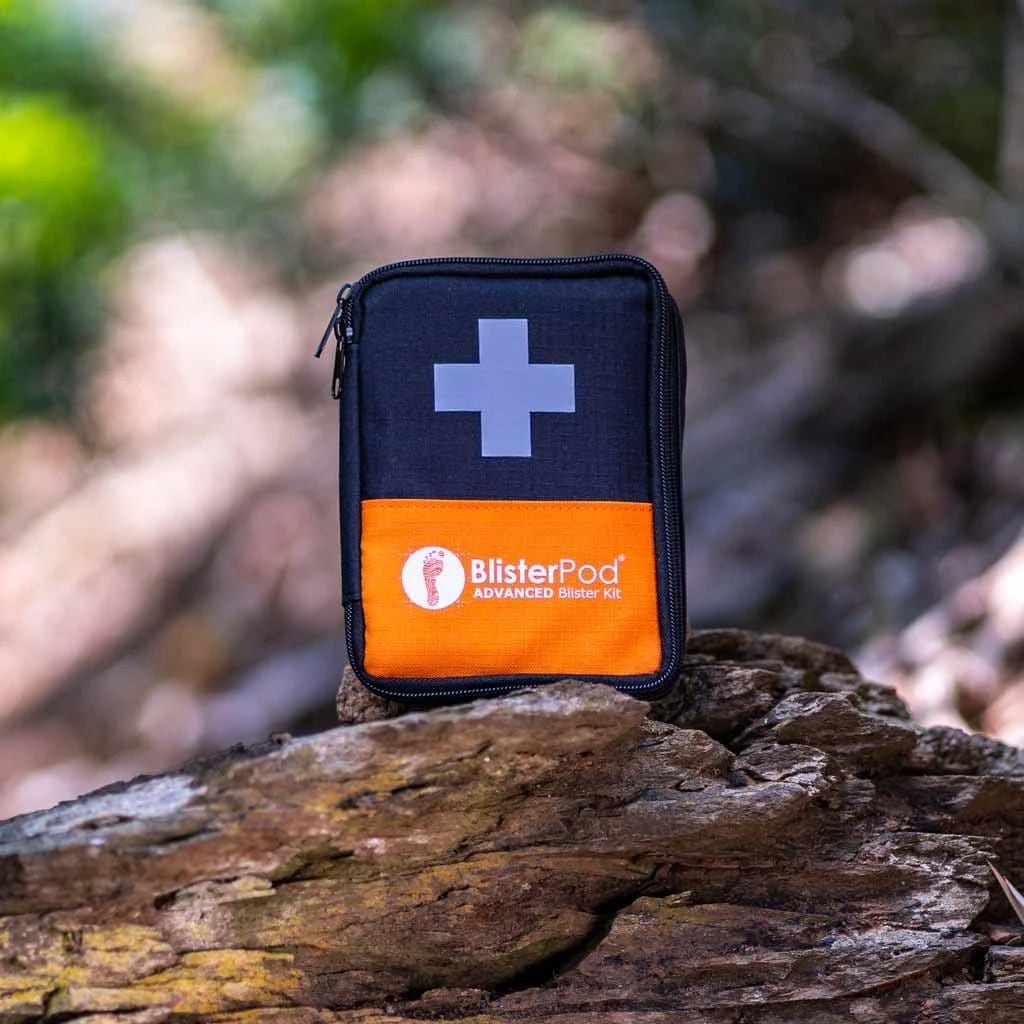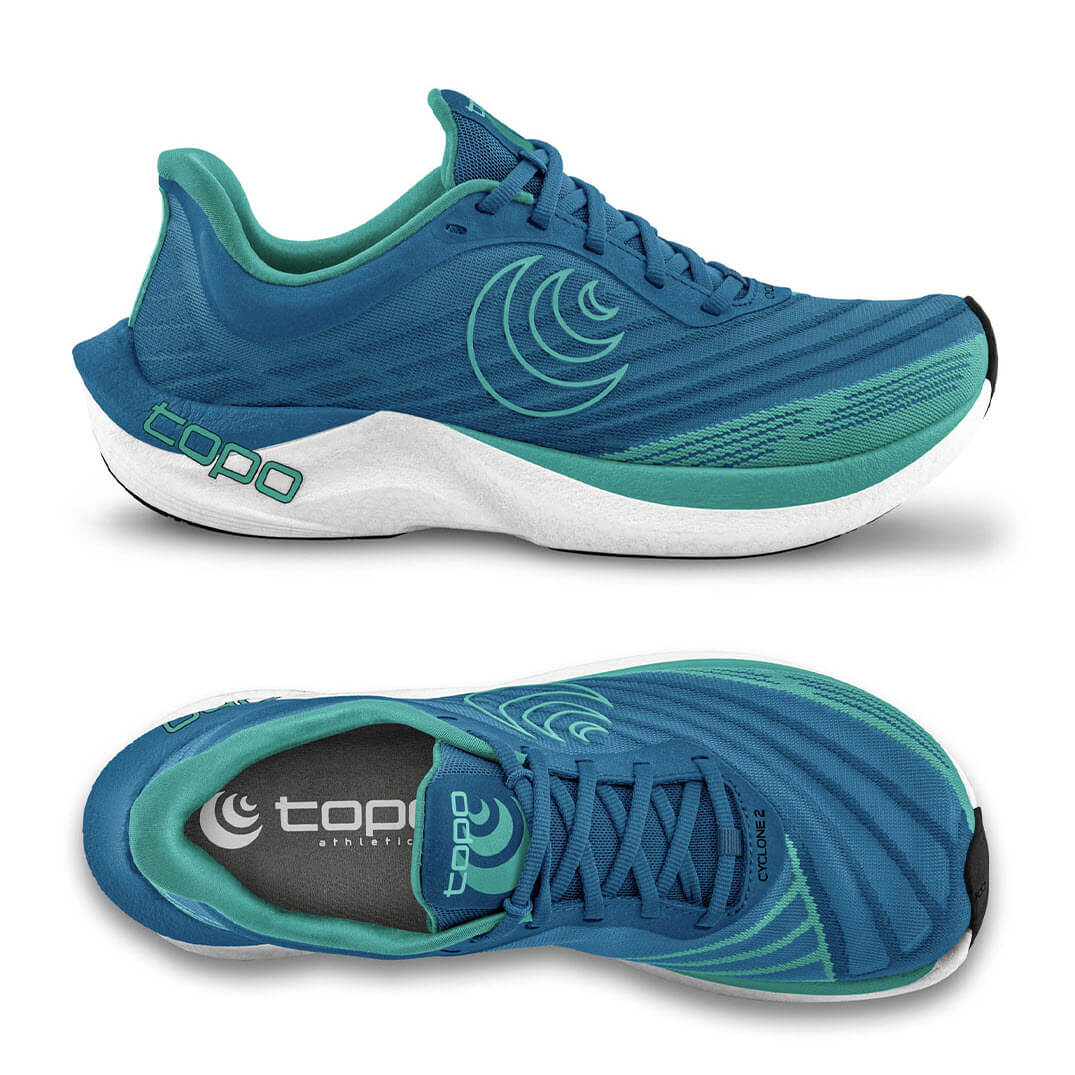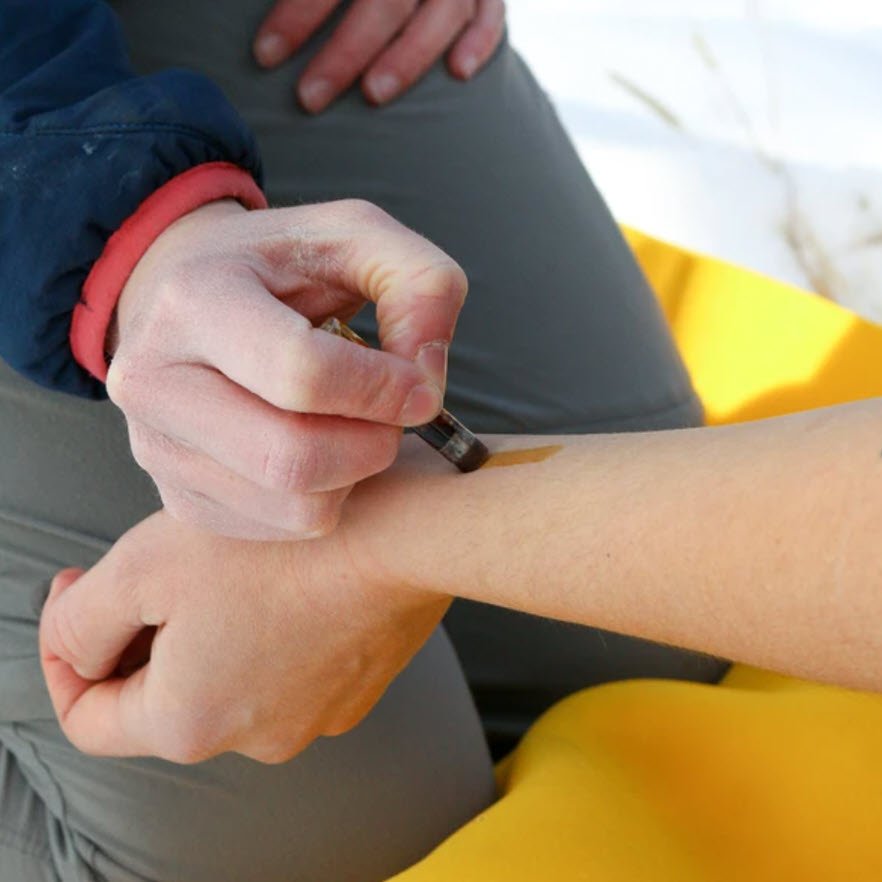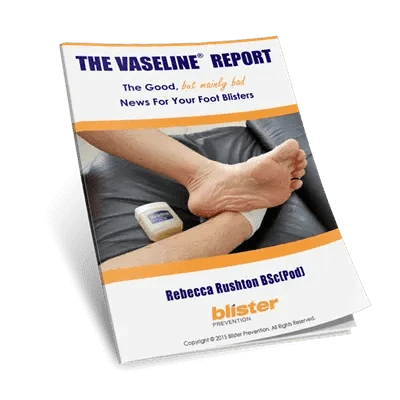While cancelled in Australia this year, Trailwalker UK is on in 4 weeks (24-26 September, 2021). One hundred kms is a long way to walk. That’s why Oxfam Trailwalker foot care an important skill to master. The risk of ankle sprains, tight muscles and blisters threaten to make this event harder than it needs to be! With this in mind, here’s my best advice to help minimise your chance of injury and maximise your comfort and performance. It’s time to get your feet in perfect working order so you can cross that finish line.
1. FOOTWEAR
Choosing supportive and comfortable footwear that fits (shoes or boots – that’s up to you) is obvious advice. But it’s sometimes easier said than done. I have 3 tips for you:
1a. Initial comfort factor
The initial comfort factor is a critical indicator not to be ignored. It might seem too simplistic to be important, but it’s one that has been shown to be a good indicator for optimal footwear selection! Learn more about initial comfort feel here.
1b. Get expert advice
The team at Paddy Pallin (Australia) and Cotswold Outdoor (UK) are all geared up to provide you with the footwear range and fitting advice you need. If you’re having trouble finding shoes that are comfortable and keep you pain-free, see a podiatrist.
1c. Lacing
The whole reason for having laces is so you can optimise the fit of your shoe at all times. Be prepared to readjust your laces a few times each day as your foot volume increases. You can have perfect shoes for your feet but if you have them too loose (or tight) you might as well not have bothered. The Lace-Lock (or Heel-Lock) lacing technique is a great one for heel AND toe blister prevention and for preventing bruising, abrasions and black nails, particularly hilly terrain on the descent. Try it.
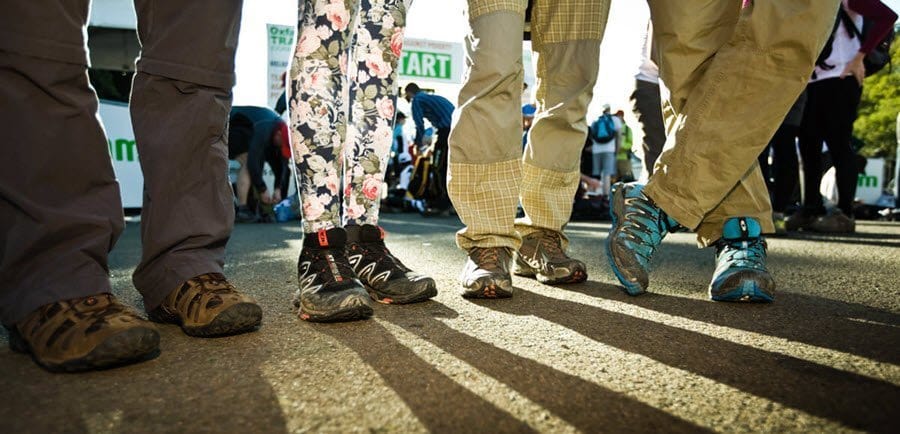
Boots, trail shoes or joggers for Oxfam Trailwalker? Image credit: Jasonmalouin.com
2. SOCKS
Sock selection is an important Oxfam Trailwalker foot care factor for things like moisture control, insulation, blister prevention but also general comfort. And a little bit of comfort will go a long way in this event.
2a. Moisture-wicking socks
By keeping perspiration away from the skin, friction levels are reduced and this goes some way to reducing the incidence of blisters. Look for words like Coolmax, Dri-fit or anything moisture-wicking. Read this for the full story on the pros and cons of natural vs synthetic sock fibres here. And if you get blisters between your toes, toesocks are worth a try.
2b. Don’t wear cotton
Cotton does the opposite, it keeps moisture on the skin, so it increases friction and makes blisters more likely.
2c. Several pairs
Depending on how sweaty your feet get and the conditions on the weekend, consider taking several pairs. Waterlogged and macerated skin is weak and prone to injury.
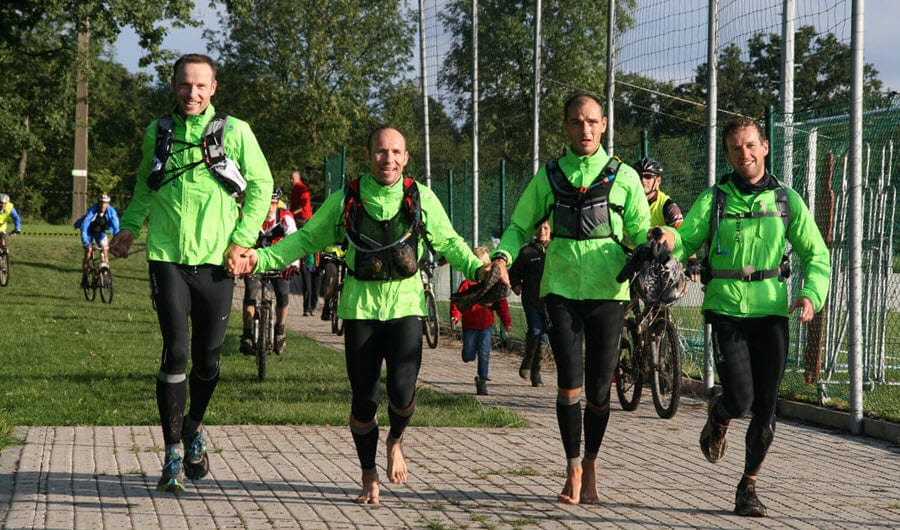
Select your socks wisely for Oxfam Trailwalker. Image credit: http://www.aideroxfamsol.be
3. BLISTER PREVENTION & TREATMENT
Foot blisters continue to hinder Trailwalkers’ performance year after year. In fact, blisters are the No. 1 reason Trailwalkers don’t cross the finish line. 73% of participants (Sydney Trailwalker 2011) is a lot of blisters! While there are podiatrists at checkpoints to help you with foot blisters in Australia, our UK friends aren't so lucky. So, self-managing your blister issues is so important.
3a. The many blister prevention strategies
Take a look at this overview (below) then click on the strategy you'd like to learn more about so you're ready to spring into action when needed.
3b. Specific advice for specific blister locations
Here are the best prevention strategies for:
3c. Expert blister treatment
Find out how to treat any foot blister with our most popular resource:
3d. Get a great blister kit
And make sure it's a good one! Read this review of the good, the bad and the ugly of blister kits on the market before you buy one, or put your own together. There are videos, content lists and my rating of 14 blister kits. Here are the video demos of our 3 blister kits, ranging from comprehensive to basic - take a look:
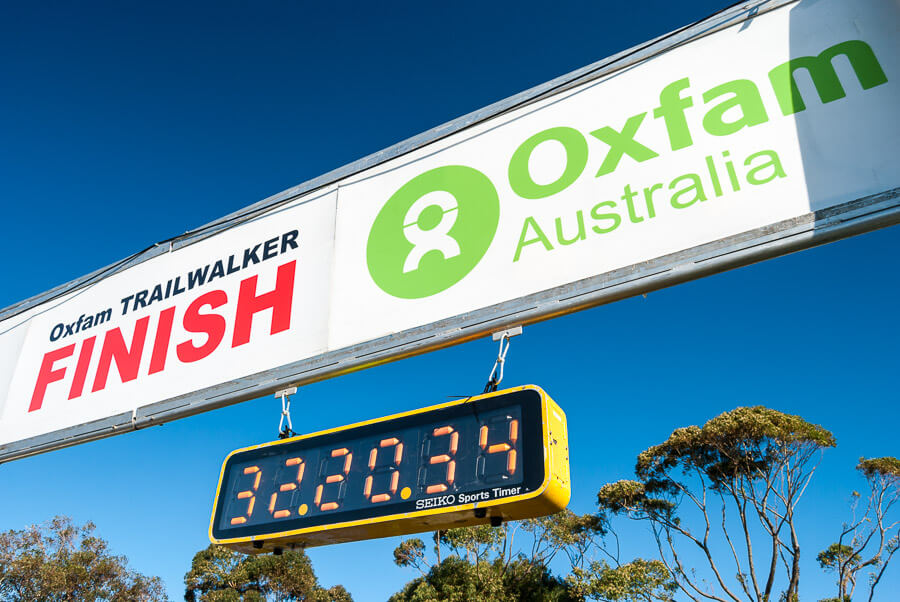
Blisters are the number one reason for Oxfam Trailwalkers to not cross the finish line – don’t become a statistic. Image credit: www.katclay.com
4. TAPING
Taping can protect the skin from blisters and abrasions. Here are some videos from both Anna Beetham and myself to help you with your taping techniques for:
Taping is popular during Oxfam Trailwalker – make sure you practice your technique. Image credit: www.katclay.com
5. GENERAL FOOT CARE
The following general Oxfam Trailwalker foot care tips will help to prepare your feet for the big task ahead:
5a. Toenails
Trim your toenails a few days to a week before the event. File them from top to bottom so there are no rough edges. Or get your podiatrist to thin any thick nails.
5b. Callouses
Get rid of callouses! A lot of callous is not protective, it will damage deeper soft tissues and may cause blood blisters. Use an emery board / foot file or see your podiatrist for professional help.
5c. Interdigital spaces
Keep interdigital spaces dry to prevent tinea eg: methylated spirits, alcohol wipes, teatree oil. Put it on, leave your toes open for a few minutes so it can evaporate (it will only dry the skin when it evaporates), then put your shoes and socks on.
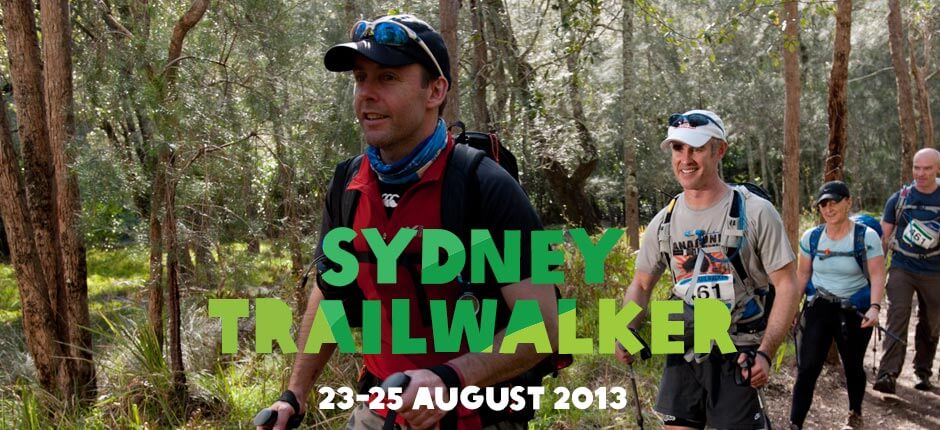
To get your feet prepared for Oxfam Trailwalker, your podiatrist can help. Image credit trailwalker.oxfam.org.au/
6. MUSCULOSKELETAL INJURY
Consider the work load your feet have ahead of them. And the influence they have on the rest of your body. Knee, shin, ankle, heel, arch, toe joint pain and other lower limb injuries are common occurrences in endurance events like Trailwalker. If you sustain an injury or start to get sore, help will be available along the trail to give you every chance to carry on. But here are 3 tips to help you proactively anticipate and overcome injury:
6a. Consider your injury history
This will be where you’re most likely to have trouble. Anticipate it and plan ahead.
6b. Start training ASAP
The idea is that any problems will become apparent early, giving you time to sort them out well before the event.
6c. Calf stretches
Tight calf muscles wreck how feet work, to put it bluntly! It’s one of the most common underlying causes for the pain, deformity and impaired performance I see on a daily basis. Stretch soon after stopping for a rest, every time! Make sure your technique is spot on so you’re not wasting your time (hint: make sure your back foot isn’t out-toed - watch this calf stretch demo video). See a podiatrist or physio for more advice on stretching the calf and other muscle groups properly: in the months before the event; while you train; during the event itself; and after.
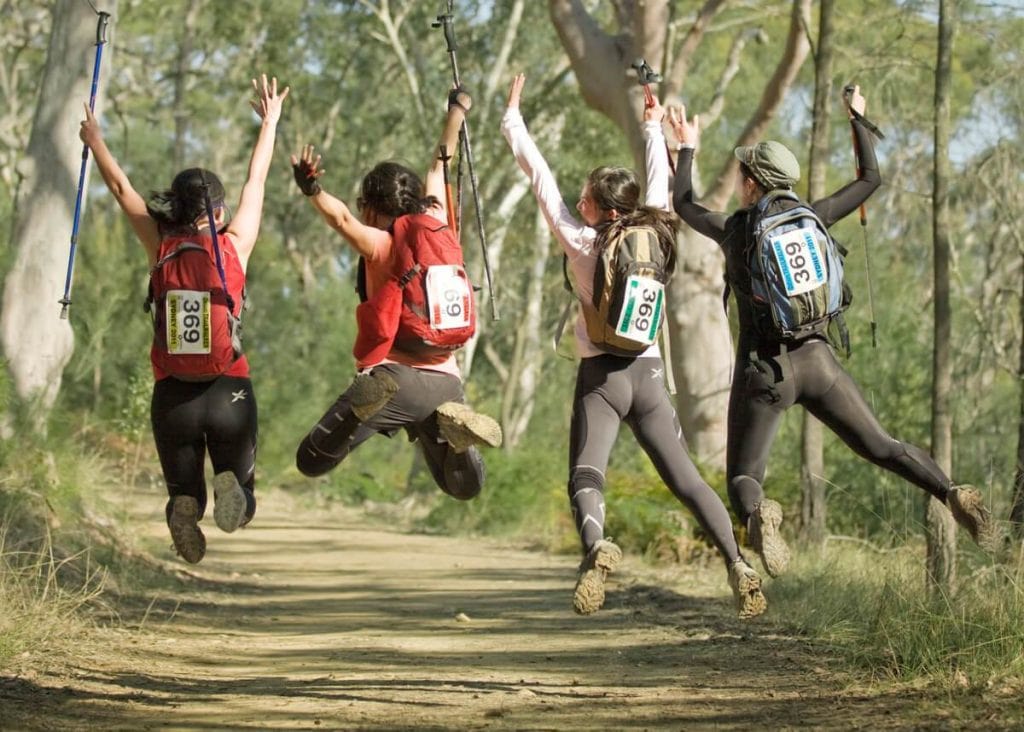
Foot care advice can help Oxfam Trailwalkers cross the finish line. Image credit: jasonmalouin.com
Are You On Top Of Your Blister Situation?
If you’re not 100% sure about the best way to deal with blisters during your Oxfam Trailwalker event, I encourage you to take a look at the Fix My Foot Blisters Fast course. I'll walk you through everything you need to know so you waste no more time.
Get The Supplies You'll Need
Grab the ULTRA Blister Kit


